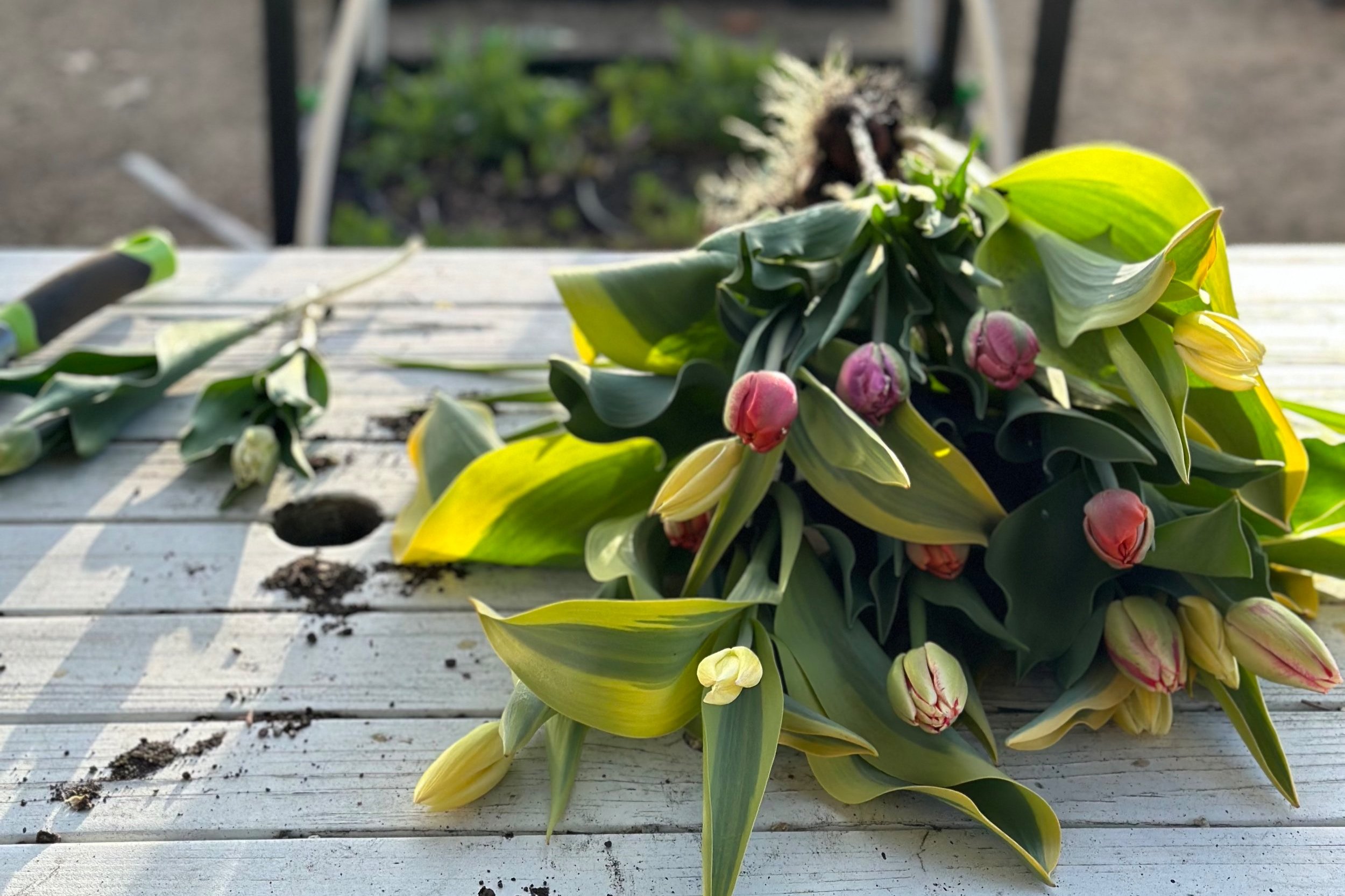Farming Tulips
Tulips are an incredible crop to grow, they’re one of the first blooms of the season and such a cheery welcome to spring. I thought I’d share a few tidbits about what it’s like to grow, harvest and sell tulips as cut flowers. The short of it is - a lot of TLC goes into the blooms that make it into a vase!
PLANTING
Tulip bulbs are planted in the fall, for me it’s usually late October or early November, just before the ground freezes.
When planting tulip bulbs to grow and farm for cut flowers, you can plant them as close as eggs in an egg carton, so you are able to fit a lot in a small space.
They need to be planted deep enough, approximately 6 inches, so that they grow as tall as possible.
THE BULB
When you farm tulips for cut flowers, you pull the entire plant out of the ground, bulb and all. The bulb keeps feeding the tulip and keeps it alive, and the tulips go into a cooler where they can be “dry stored” for a couple of weeks.
By keeping the bulb attached, once you’re ready to cut it off you can get the maximum stem length possible by snipping it right above where the bulb is. A lot of people ask if the bulb can be replanted after it is cut off the stem, and the answer is no. In order for it to be able to produce again next year, the foliage has to die back while still attached to the bulb to re-fuel it. Once cut to be used in a bouquet, the bulb is then composted.
When pulling the tulips, you have to be very careful not to snap the stems. If the bulb becomes detached, the tulip cannot be stored for as long. The stems that I snap become the beauties you see in my photos, and I get to enjoy them in my own home!
TIMING
Tulips need to be harvested before they bloom, ideally the bud is colored up and is slightly cracked open, but no more than that. Farmers need to babysit tulips so they’re harvested at the right time. If there is a sunny warm day, there is a good chance a farmer is working their booty off to get them harvested quickly before they all start to open and bloom too much.
There are different types of flowering times for tulips, some are classified as “early” and some as “late.” From my experience here in Bend, sometimes the timing classification is accurate and sometimes it’s not. One of my “late” bloomers actually was one of the first that I harvested this year.
When you’re growing to try and provide blooms for a holiday, like Mother’s Day, you’re pretty beholden to Mother Nature and just hope that it works out. You time things based on experience, trial and error. There are things you can do, like growing in a greenhouse, covering with shade cloth, or frost cloth, to try and speed up or slow them down, but ultimately it’s mostly out of your control.
POST HARVEST
As a small grower, I need to think about things like cooler space when figuring out my tulip plan. I ran out of space in my own cooler this year, but fortunately was able to borrow space in the cooler of my flower farmer friend.
Conditioning (prepping/hydrating) the stems to sell is a really important step. Without proper conditioning, tulips will flop over in a vase.
It takes a significant amount of time and labor to get tulips ready to sell and live their blooming life in a vase.



